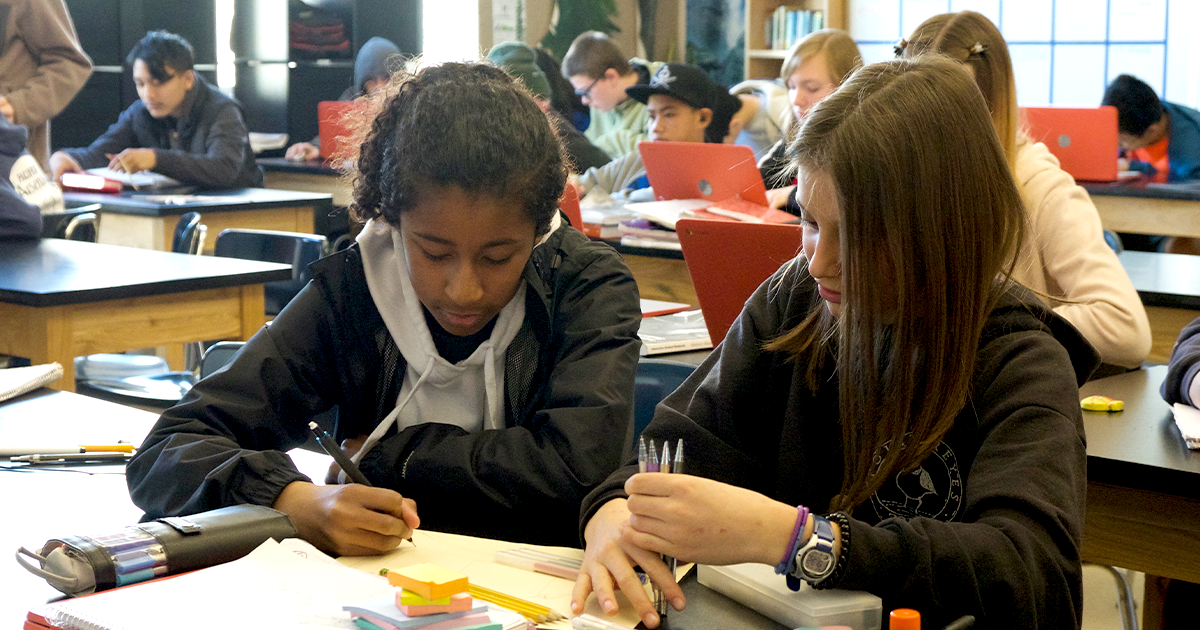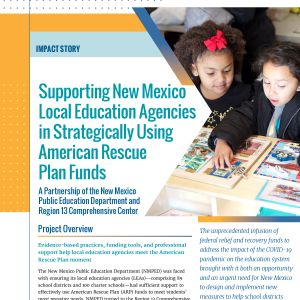New White House Community Schools Toolkit Includes Brief on New Mexico Successes
Posted on

The Los Padillas Elementary School in Albuquerque, New Mexico, extended its school day by an hour for students to explore activities and topics of interest to them. In the year after this “Genius Hour” was added, chronic absenteeism at Los Padillas declined by 9.67 percent.
In Taos, New Mexico, the Enos Garcia Elementary School Council—through which area business and nonprofit leaders collaborate with school leaders—harnessed the power of needs assessment survey data to ensure local families had access to food, tutoring, and technology.
These are among the New Mexico community schools featured in New Mexico’s “Community Schools and Extended Learning Brief” included in the White House Toolkit, “Federal Resources to Support Community Schools.”
Released by the Administration in concert with the announcement of new federal Full-Service Community Schools program grants, the White House toolkit is intended to “help community school advocates, coordinators, and directors, as well as other community shareholders, identify funding sources and grant programs that can be used to support community schools and meet the unique needs of their communities.”
The “Community Schools and Extended Learning Brief” was created by the New Mexico Public Education Department (NMPED) in partnership with the Region 13 Comprehensive Center (R13CC). The brief reports early results from community school grantees in the state since NMPED launched and began to implement community schools under the New Mexico Community Schools Act of 2019.
Research shows that community schools, designed to provide comprehensive academic, social, and health supports for students and family members, result in improved educational outcomes for students.
The state of New Mexico has supported the coordination of such services to students and families by allowing community schools to leverage community resources and integrate funding streams to help meet the needs of the whole child more effectively. R13CC assisted NMPED in the initial planning, communication, administration, and implementation of state-funded community school grants for school districts and schools beginning in 2019 with the ultimate goal of expanding the community school approach across the state.
For more on NMPED’s community school efforts and available resources, visit the Community Schools bureau.
To learn about the four “pillars” associated with community schools that support the conditions for teaching and learning found in high-quality schools, visit Addressing the Whole Child: Community Schools in New Mexico.
The Region 13 Comprehensive Center works with state education agencies and their regional and local constituents in New Mexico, Oklahoma, and the Bureau of Indian Education to improve outcomes for all children and better serve communities through capacity-building technical assistance. For more information, visit https://www.wested.org/project/region-13-comprehensive-center/.
The contents of this news post were developed by the Region 13 Comprehensive Center in partnership with the New Mexico Public Education Department. The Region 13 Comprehensive Center is funded by a grant from the U.S. Department of Education. However, the contents do not necessarily represent the policy of the Department of Education, and you should not assume endorsement by the federal government.

